- Bedbugs and eggs
- Bed bugs - their larvae and eggs
- Bedbugs
- Bedbug eggs
- Mating bugs
- The temperature of the death of bugs
- Bedbugs in the house
Bed bugs - blood-sucking insects that parasitize in human dwellings, burrows of warm-blooded animals, are found in bird nests, hollows and caves. Pests have an incomplete transformation cycle. Blood feeds not only the adult generation, but also the larvae of bugs.
Appearance and life
The larvae of the bug have a structure and appearance similar to adult individuals, with the exception of some features of life and the size. When hatching from eggs, larvae are small, not more than 1.5 mm. The chitinous cover is soft and transparent, therefore, when feeding, blood is visible that fills the digestive system of the parasite. The body is flattened from top to bottom and somewhat more elongated than in an adult.
After 4-5 links, nymphs become sexually mature adult bugs, without undergoing morphological changes, so the development cycle is called incomplete. Larvae move slowly and always live near a source of food.
In order to go into the next cycle of development, the larva must be fed. Only a well-fed nymph molt and grows in size. By 4-5 molting, it becomes three times larger than the initial size and reaches 4.5 mm. By the time of transformation into an imago, the color of the chitinous cover darkens and becomes dark brown.
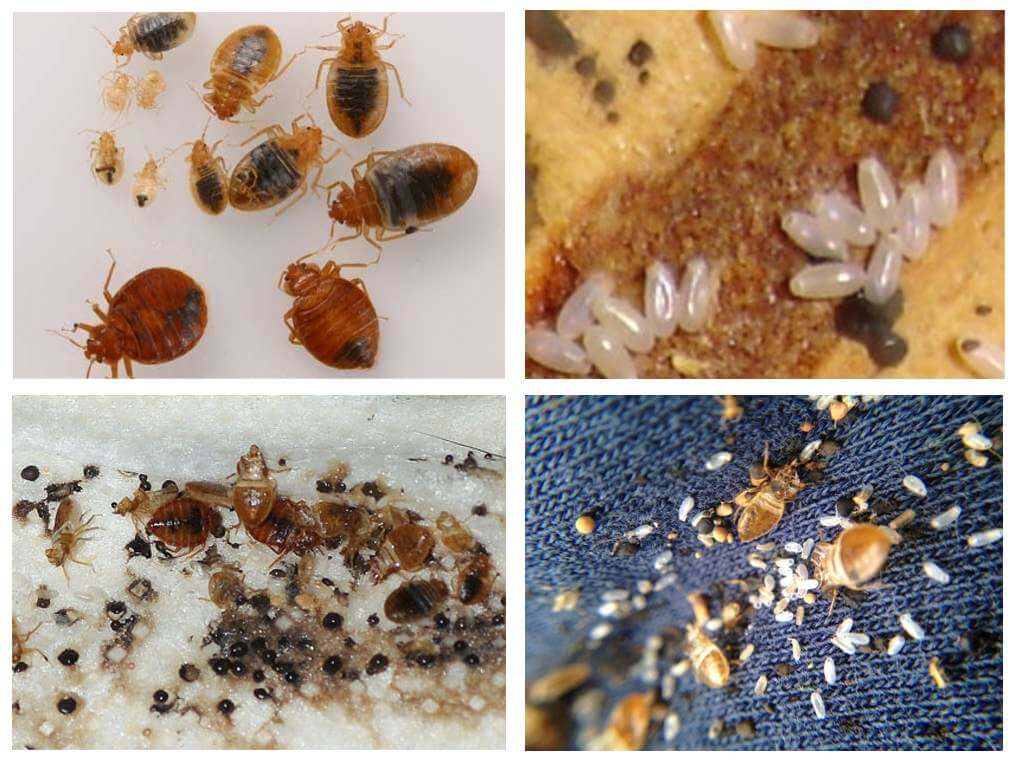
On a note!
Among the parasite bugs, synanthropic species living in human dwellings are of the greatest importance. Home, bed, dress, furniture bugs are one and the same type of blood-sucking insects Cimex lectularius, which are called by habitat.
Despite the fact that more than 28 pathogens of vector-borne diseases were found in the intestines of ectoparasitis, but their transmission during bug bite man does not happen. An exception is the Reduviidae family of bugs, whose representatives can be carriers of a tropical disease - American trypanosomiasis or Chagas disease. In everyday life, these insects are called killer bugs or kisses.
Nutrition occurs at night, although bed bugs do not lead an exclusively nocturnal lifestyle.
Features of nutrition and digestion
Bed nymphs have a piercing-sucking mouth apparatus. The bug with the help of a bundle of mandibles and maxillas located in the food canal is firmly fixed in the skin. With jagged mandibles, he deeply clings to the skin, pierces it and advances the maxilla into its thickness, reaching the blood vessel. In addition to the alimentary canal, the oral organs form a canal through which the contents of the salivary glands are injected into the victim’s body, rich in enzymes that prevent blood coagulation and have an analgesic effect.
Digestion of food in bedbugs, like many ectoparasites, depends largely on the presence of symbiont bacteria in the digestive system. If the bacteria die, the larvae stop developing after the second or third molt and die.
The legs of bed or house bugs are only running, but adults move quickly enough.Due to the fact that the larvae move slower, they are on the human body for only 5-10 minutes. During this time, a nymph of the first age drinks 0.3 mg of blood. With each growing up, this amount increases, and the imago can drink up to 7 mg of victim’s blood at a time. In the photo larvae of bugs.
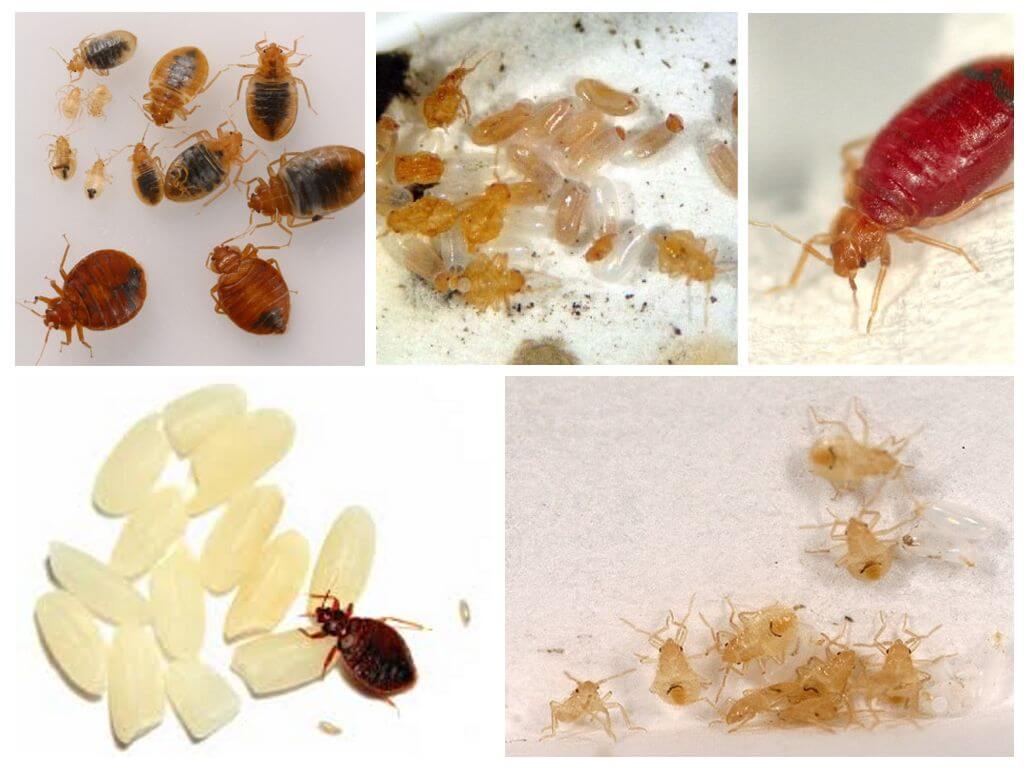
Interesting!
Among the bugs there are predatory species that feed on the contents of eggs and larvae. In the absence of free access to the food object, bloodsuckers can engage in cannibalism by eating their relatives. Some tropical species are a transitional link between predators and parasites - they can feed on both other arthropods and the blood of large mammals, including humans. Some predators used in pest control of crops.
Bedbug larvae feel the beating of blood in vessels, therefore they pierce the skin several times over the capillary, forming paths of 3-5 bites. This bites the bugs and differs from the random bites of other blood-sucking insects. An adult parasite eats once every 1-1.5 weeks. To turn the larvae requires much more blood, so they can bite the victim daily.
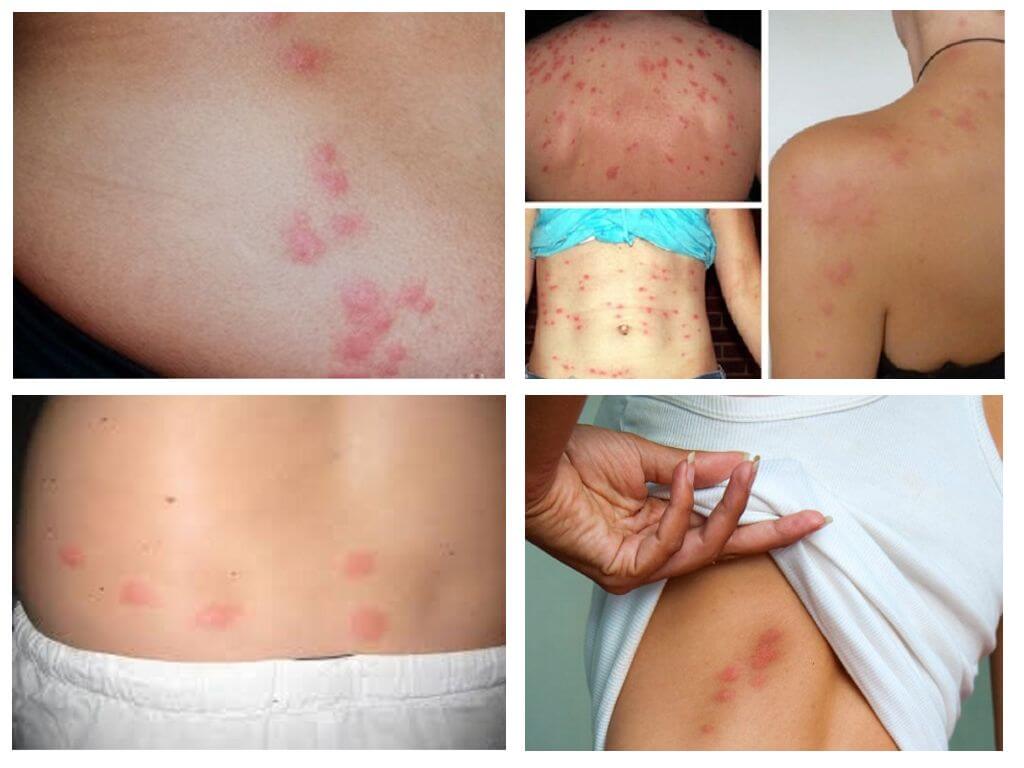
Bites of bug larvae with the same frequency are found in representatives of both sexes and are not dependent on the blood group. Having carefully examined how the larvae of the bugs look, you can determine by the color of their abdomen how long they ate. The “nibbled” nymphs have a bright red color. Gradually, the blood coagulates, darkens, and after a few hours the color becomes brown, and after a few days - black. Larvae can survive without food for only 7-8 days, while the adult generation can survive 18-20 days without food.
Stages of development from an egg to an adult bug
Feature breeding bed bugs is traumatic fertilization. The male genitalia has a sharp tip with which it pierces any part of the female’s body. Injected spermatozoa with hemolymph flow are transported to a special, typical only for bed bugs, Berlese organ. It is used not only for long-term storage of sperm, but also for the regeneration of the female’s body after an injury.
With the flow of hemolymph, the seminal fluid migrates to ovariols, where the eggs are fertilized. Throughout life, one female can postpone about 500 oblong eggsequipped with a lid for exit larvae. The number of eggs depends on the amount of sperm that has entered the body, ambient temperature and nutrition.
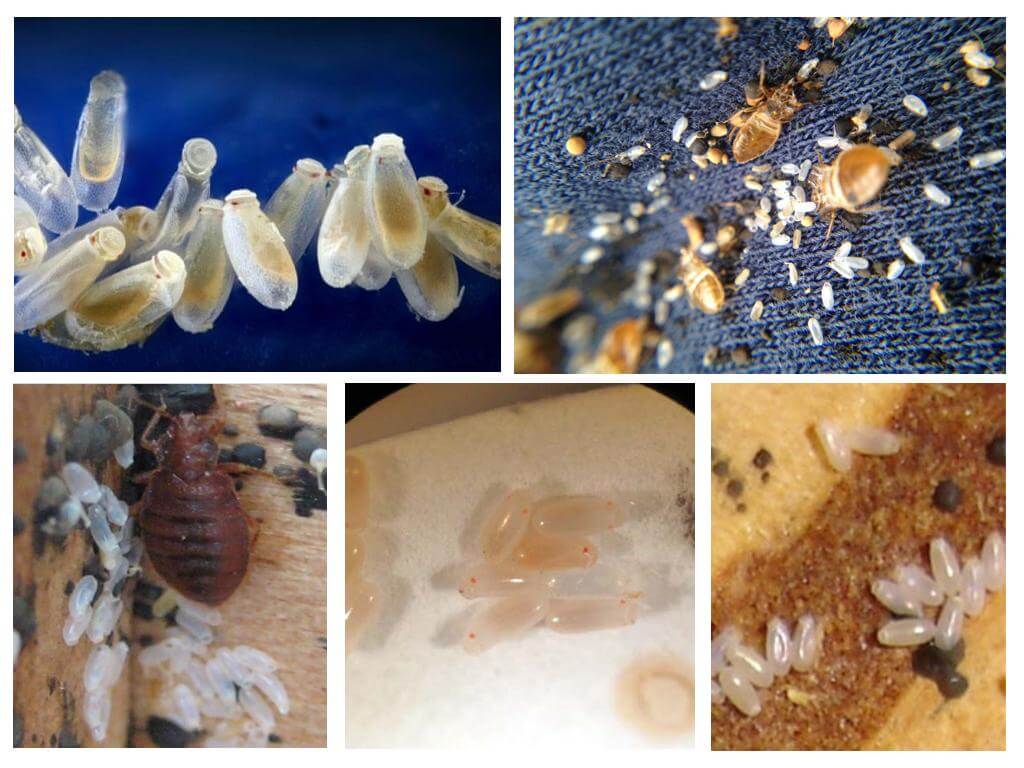
A female lays an average of 5 eggs per day, resembling a tiny transparent capsule in appearance. Durable adhesive coating reliably protects the embryo from external influences and chemicals. Most effective insecticides they do not destroy eggs; they can be eliminated either mechanically or using the temperature regime. Disastrous temperatures for bed bugs and ovipositions: -20 ° С, + 50 ° С.
After 3-4 days, after laying the fertilized eggs, larvae of the first generation appear from them. An adult can live up to a year in favorable temperature conditions. Even a single female bug is able to establish a large colony.
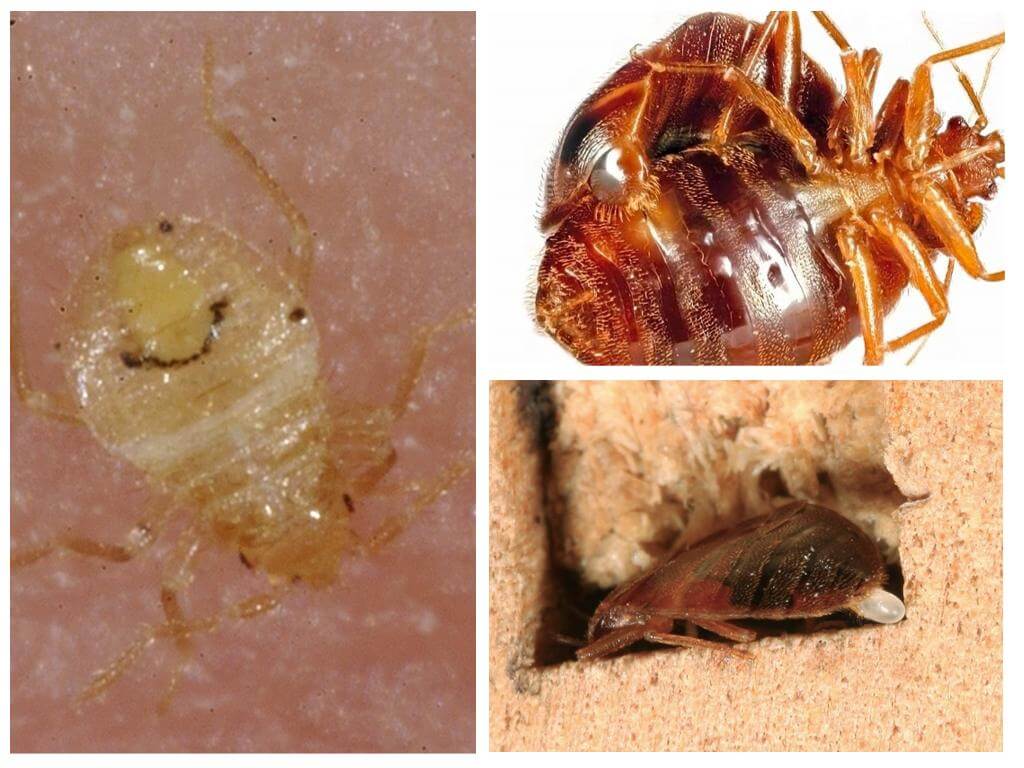
On the abdominal segments of the larvae of the bugs there are glands that produce secretions with a specific smell. In adult parasites, these glands are located on the metatarsus. The secret contains:
- pheromones - to attract individuals of the opposite sex;
- indications of the presence of a food object - pheromones of the “food path”;
- hazard warning - alarm pheromones.
The glands also produce kairomons, substances that repel predators. With a large population of bed bugs specific odor strongly felt. It is unique that during feeding the larvae secrete pheromones, attracting “relatives” to the “table”, and when finished eating, they secrete kairomons, which frighten off predators.
One week passes between the next molt larva and its transition to the next stage of development. The entire development cycle takes 1-2 months in favorable conditions, and with a decrease in temperature it can stretch to 80-100 days.
Favorable and unfavorable conditions
Bed bugs, the development stages of which depend on the microclimate, are very sensitive to temperature and humidity. The most favorable temperature for life is above 16 ° C. Below this value, imagoes fall into a state of numbness and may exist for such a long time. At a temperature of -10 ° C, adult insects live no more than 5 days, and the larvae die within a few hours. At - 32 ° С, larvae, eggs die instantly, and adults - in 10-15 minutes.
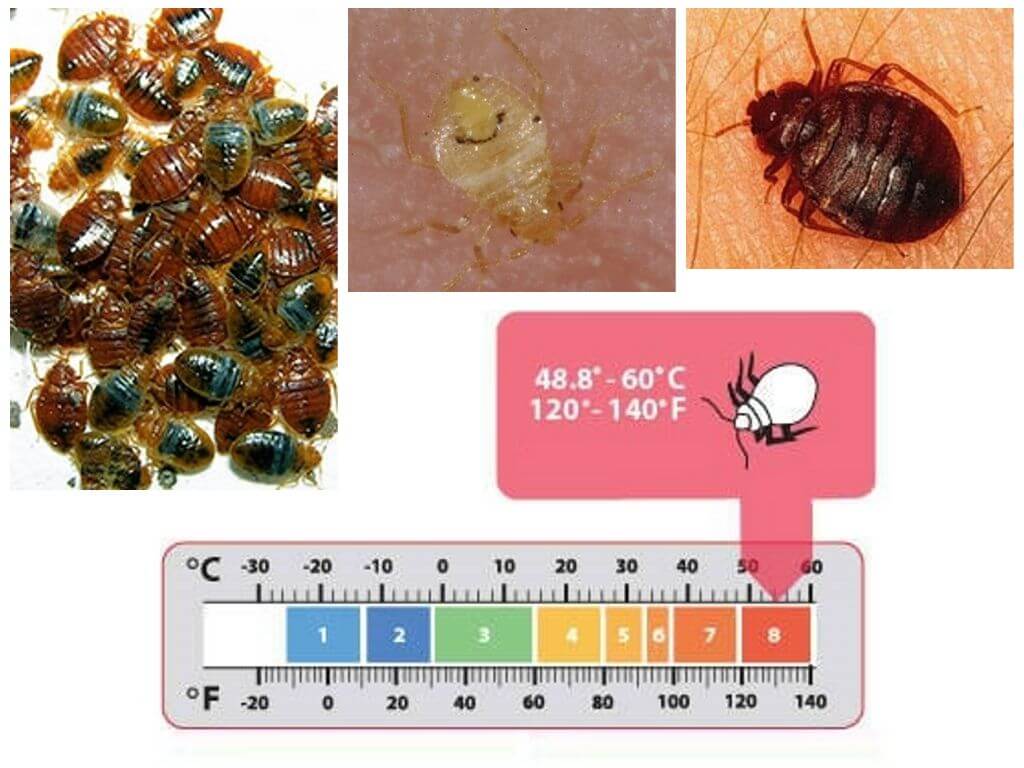
Bed bugs tolerate low humidity well enough. At a temperature of + 35-40 ° C and low humidity, they survive, even losing 1/3 of the liquid. But the smaller the age of the larva, the more susceptible it is to temperature and humidity. The upper temperature limit for bed bugs is + 45 ° С.
To get rid of bedbug larvae, it is necessary to freeze or warm bedding, furniture and places where insects hide. Bed bugs do not tolerate high concentration of CO2, but they can feel tolerably well in an atmosphere of pure nitrogen. In the experiments, they withstood such conditions for 72 hours.
The formation of colonies of bugs

Insects are mainly in shelter, which protects them from predators, the threat of destruction, reduces the impact of the microclimate and provides a great opportunity when choosing a partner. Pheromones help bed bugs to gather in colonies, they can communicate in them not only with the help of volatile substances secreted by the glands, but also with the help of mechanoreceptors located on the antennae of insects.
Females more often leave colonies in order to find new places for laying eggs and new food sources. While in the colony, the males secrete odorous substances, attracting still unfertilized females and scaring away other males.
Although the parasites can live separately, but after completing their nutrition, they go to places where you can hide to digest food, molt and lay eggs. Detect bug colonies possible by the characteristic smell of rotting raspberries. Larvae and adults hide in slots, behind skirting boards, in furniture, household appliances, sockets.
Over the years of chemical bedbug control their resistance to many types of insecticides has increased. Therefore, scientists are studying the insect genome to create a means of population regulation that is equally effective at all stages of the development of blood-sucking insects. Knowing what bedbug larvae and adults look like, you can be on time get rid of parasitesby not allowing severe infection of the apartment. Excrement found in bed, empty chitinous shells and blood stains from crushed insects serve as the basis for processing the room. Egg laying is found in places where bugs accumulate and is less noticeable. therefore apartment processing should be universal, especially in hard-to-reach places at home.
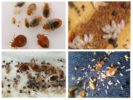
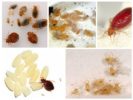
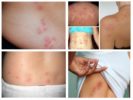
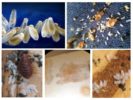
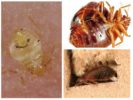
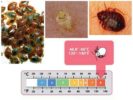
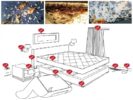

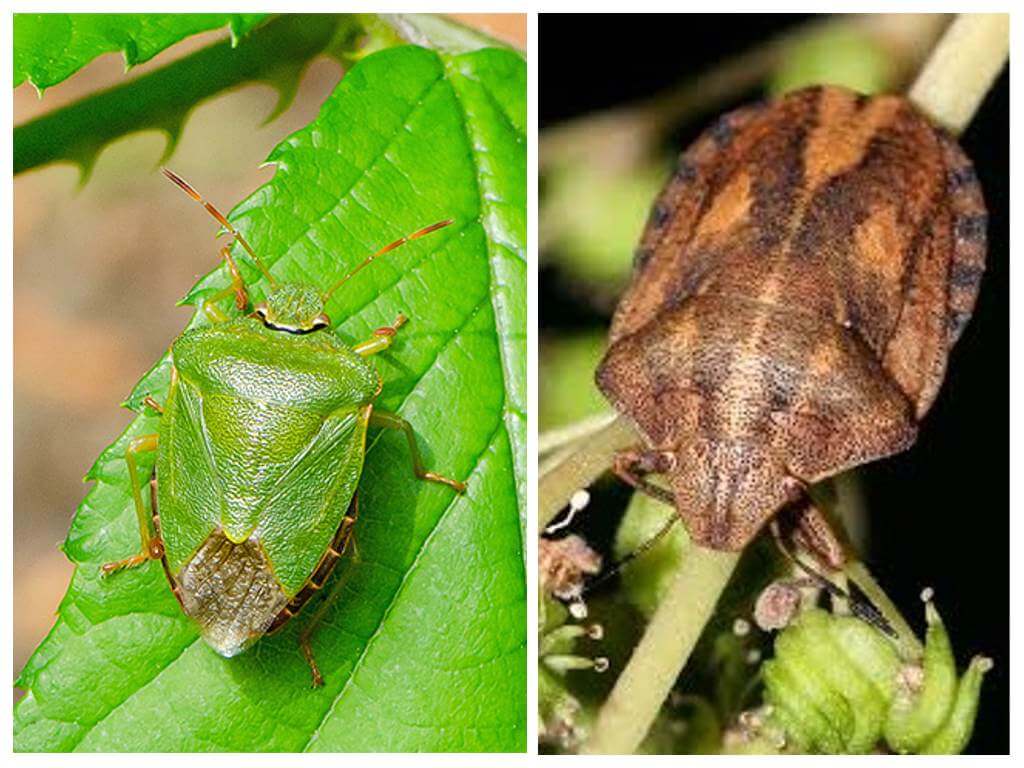

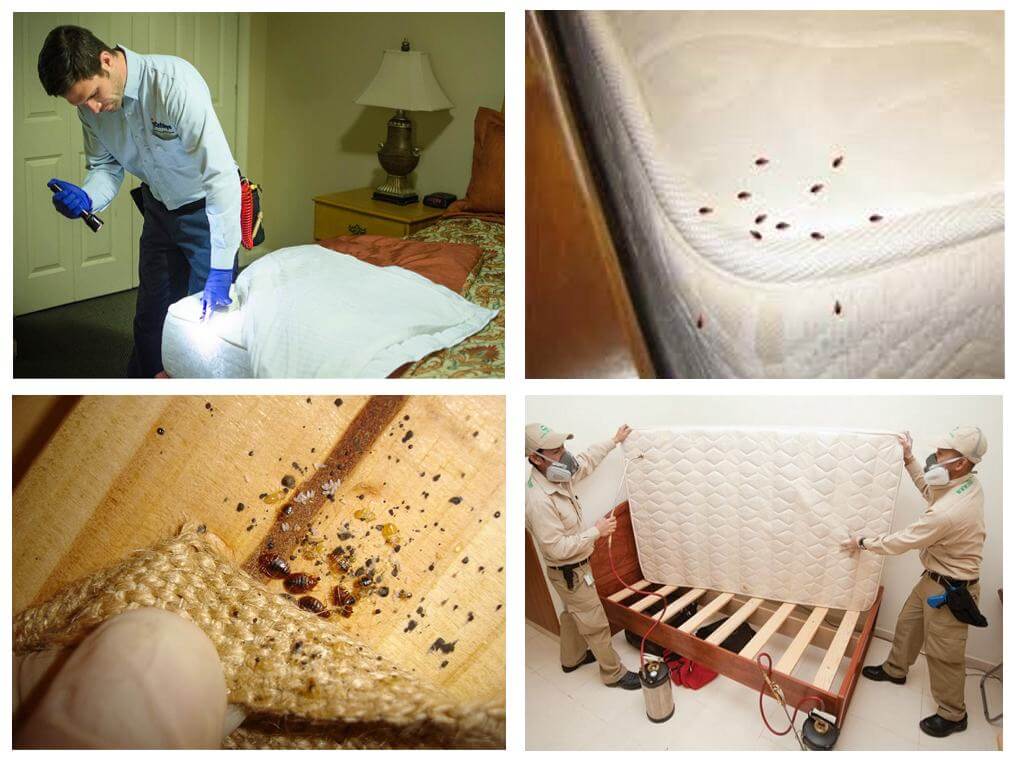
Larvae are even more vile than adults. Transparent, with black eyes ... Bite no worse than adults. For the first time I saw bugs in my grandmother’s house. I remember how they pulled iron beds into the street and burned out all the joints and fixtures, sprayed all the corners and furniture with smelly liquid.
You can’t confuse bites with anything. And all bite - small, large. In the morning you get up all covered with red spots. And to remove this infection is more difficult than other bloodsuckers.
Yes, before only Dichlorvos saved. It’s good that now there are not such poisonous remedies. But when he brought bedbugs from abroad in his luggage, he preferred to call a special service - it is not known how these animals would behave. And so at one time got rid of them.
In the pioneer camp, we often suffered from bedbugs. My girlfriend was already fond of insects. Now she is studying them. And before, I remember, they examined them under a magnifying glass. Nasty adults and larvae. But the larvae came across more often because they ran slower.
Here's another - consider them! It was necessary to burn with a magnifying glass! How much we scratched in our childhood from these bugs.
Interesting information. I did not even suspect that homosexuals are among insects.
In the village, where he went on vacation in childhood, the bugs often prevailed. Especially in old beds bred. I ran from them to the hayloft, but fleas and mosquitoes bit them there.
I read that they were brought to the New World by immigrants. Previously, the Indians did not suspect that there are such parasites. So the white man introduced them not only to horses, but also awarded them with bedbugs.
I'm afraid of all insects, but there’s nothing to say about bugs, even from a student dormitory. We came to the hostel after the holidays and first of all we started to poison the cockroaches, to kill bugs. And nothing affected them.